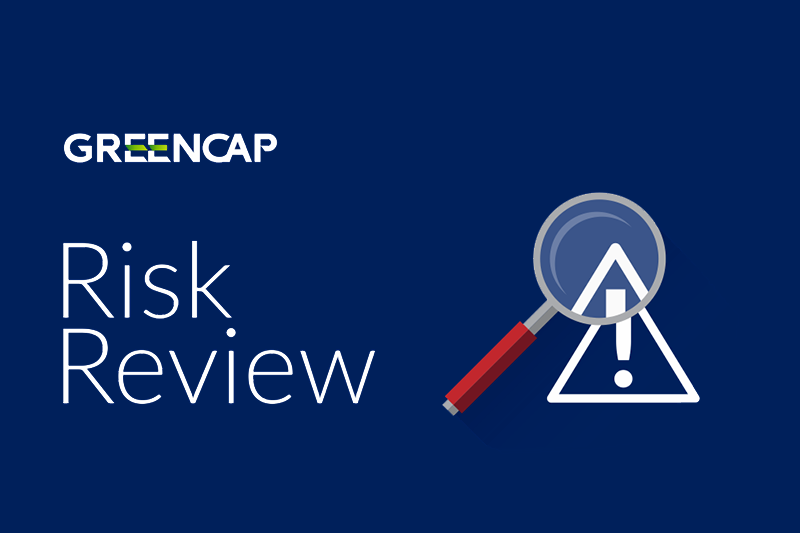News & Insights
The importance of safe, healthy and optimised indoor environments
Indoor air can often be more polluted than ambient external air due to the enclosed environments we live and work in. In these spaces the operation of Heating, Ventilation & Air Conditioning (HVAC) systems and the presence of synthetic and naturally occurring pollutants, allergens and pathogens can impact occupant health if not considered and controlled. The average Australian spends between 80 to 100 percent of their time indoors (at work and at home), so it is not surprising that indoor environmental quality (IEQ) has demonstrated impacts on occupant health and wellbeing, and can impact the resale value of a building, and liability for building owners.
IEQ considers how the health of building occupants is impacted by internal parameters, such as lighting, indoor air quality (IAQ), thermal comfort, humidity and ergonomics. Whilst some of these parameters, such as ergonomics and thermal comfort can be assessed with well-defined methods, more complex investigations of indoor air quality, ventilation and chemical pollutants can be challenging to address.
Poor indoor air quality can directly impact worker concentration, productivity and performance, and has been shown to increase the frequency of sick leave and health complaints such as allergies and asthma. Where vulnerable or immunocompromised occupants are present (for instance in healthcare or aged care settings), poor management of IAQ during construction, refurbishment and renovation works can also compromise health outcomes and produce heightened infection risks.
There has been a significantly increased focus on IAQ management since the onset of the pandemic in 2020. The last two years have highlighted the importance of ventilation and good IAQ in workplaces as part of a multi-faceted approach to reduce airborne viral transmission risks as far as practicable. In many cases, providing a high quality, comfortable and healthy work environment is also now key to encouraging the transition back to the workplace.


Treating air with UV light inside an air-handling unit © Greencap 2022
Why do an IAQ Assessment?
IAQ assessments are a valuable tool to inform ongoing building management and occupant protection measures. The scope and extent will vary according to the specific needs, uses and type of building being assessed, but they can be targeted to improve asset resilience and maintenance, or be more focused on occupant wellbeing, comfort and productivity.
For facilities and building managers:
- IAQ assessments can form part of ongoing best-practice building compliance checks to verify HVAC and building management systems are operating as required.
- Where occupant complaints occur (for example headaches, itchy eyes or odour impacts), facilities managers may commission an IAQ to identify potential root causes or air quality parameters associated with the complaints.
- Where a building is impacted by mould or water damage, IAQ assessments can be used in support of broader mould investigation works to identify root cause, find impacted areas, and monitor the adequacy of containment measures during remediation.
- For complex multi-use sites, for example loading bays in warehouses, IAQ assessments can be used as part of wider occupational hygiene assessments to ensure workers are not exposed to elevated concentrations of specific contaminants such as diesel particulate, and that filtration and air intakes for the HVAC system are set-up correctly.
IAQ assessments are also an effective tool to ensure high quality outcomes for construction, refurbishment and renovation works. For example:
- Following the commissioning of a HVAC system in a new building, an IAQ assessment can confirm that the system is working as designed, with appropriate setup against fit-out, and whether any rebalancing is required.
- As part of refurbishment or fit-out works, a tailored IAQ (which considers airflows and air movement through a space) can be used to assess whether altered internal layouts have created any ‘dead zones’ or areas of low air change rate.
- For construction or refurbishment works in healthcare or aged care settings, dust containment within work-zones is critical to protect occupant and patient health from infection risks (such as airborne mould and other pathogens) particularly in clinical areas. In these settings, IAQ assessments can be used to monitor the adequacy of working zone containment and dust controls during works.
As Australia emerges from the pandemic, many businesses and PCBUs are looking to ensure the provision of safe and healthy work environments into the future. In this context, IAQ assessments can be used to:
- Support the management of healthy and comfortable indoor work environments to encourage a workforce back into the workplace after sustained periods of working from home
- Assess opportunities for installing retrofitted air purification technologies for HVAC systems (e.g., HEPA filtration, bipolar ionisation, UV air treatment etc.) Many of these technologies represent a significant capital outlay and can result in increased energy consumption with little benefit if not scoped appropriately. By completing an IAQ prior to installation of an air purification solution, it may be possible to optimise their efficacy whilst balancing operational costs
- Verify the IAQ after rebalancing an HVAC system to increase fresh air intakes and/or air change rates; or
- Assess airflows within a building (using specialised marker compounds such as VeriDART by SafeTraces) and identify ‘dead zones’ or areas with poor mixing and air exchange which may act as potential ‘hotspots’ for airborne contaminants.
What does an IAQ assessment involve?
An IAQ can be tailored to measure any range of specific airborne substances, however common scopes might include a combination of the following:
- Basic gas concentrations (CO2, CO, NOx, O2)
- Specific additional parameters (VOC, diesel particulate, respirable/inhalable dusts, mould spores, trace gases, biological pathogens etc.)
- VeriDART by SafeTraces or other aerosolised marker compound to assess risks from dispersion of viral particles or infectious aerosols. This can be combined with Computational Fluid Dynamics (CFD) modelling for high-risk or complex settings for a more comprehensive assessment of internal air movement
- Measurement of airflow at HVAC supply and return registers to verify adequacy of air changes per hour (ACH) for specific types of workplace, or
- Monitoring of air quality outside working zones and containment areas for construction works in sensitive environments.
- Expanded ‘IEQ’ scope to incorporate additional parameters, particularly thermal comfort and relative humidity, given that these parameters are intrinsically linked with air handling and indoor air quality, and have been demonstrated to reduce infection risks when controlled appropriately.
A robust IAQ assessment comprises three main stages: Identify, Assess and Quantify

IDENTIFY
During the initial scoping stage, the objective is to establish the desired objectives of the assessment, which parameters should be considered, and where measurements should be taken. This stage considers the specific building use and location, occupant groups and risk factors, and likely presence of contaminants, pollutants and/or allergens.
ASSESS
This stage comprises the onsite collection of air quality data using calibrated specialist equipment. An occupational hygienist or Indoor Environmental Professional (IEP) will attend site and set up a combination of static monitoring stations, airflow measurement equipment, and handheld monitors to collect data from multiple locations around a workplace, selected based on specific area use, occupant density and/or air handling plant positioning.
QUANTIFY
In the interpretive stage, the air quality monitoring results from the onsite assessment are used to quantify risks, identify opportunities for improvement, and document apparent issues for the building. Recommendations and corrective actions are provided where required.
Do you need an IAQ?
High-quality indoor work environments are known to directly affect health, wellbeing and productivity. Far from being a ‘tick box’ exercise, when designed and implemented with the specific needs of the building and occupants in mind, IAQ assessments provide valuable insight into the appropriate measures required to create workplaces which are safe, healthy and enjoyable places to occupy.
How Greencap can help
Speak to one of Greencap’s specialist team of Indoor Environmental Professionals and Occupational Hygienists to help you scope and deliver an IAQ assessment that is tailored to your specific need.
Fill in the form below for further information, or if you require any assistance in managing your environmental risks.
Disclaimer:
The information in this material is not intended to provide, and should not be relied upon, for legal or professional advice and is subject to change.
This material provides general information only and does not take into account your particular needs or circumstances. Before making any decisions, you should assess whether this material is appropriate for you and obtain legal advice tailored to you having regard to your particular needs and circumstances.
Greencap Pty Ltd (Greencap), its officers, employees and agents believe that the information in this material and the sources on which the information is based (which may be sourced from third parties) are correct as at the date of publication. While every care has been taken in the preparation of this material, no warranty of accuracy or reliability is given and no responsibility for this information is accepted by Greencap, its officers, employees or agents. Except where contrary to law, Greencap excludes all liability for this information.
If this material contains links to third party websites, Greencap does not control and is not responsible for the information contained within these websites. None of these links imply Greencap’s support, endorsement or recommendation of any other company, product or service.



Greencap acknowledges the Traditional Owners of Country throughout Australia and recognises their continuing connection to land, waters and culture. We pay our respects to their Elders past, present and emerging.



